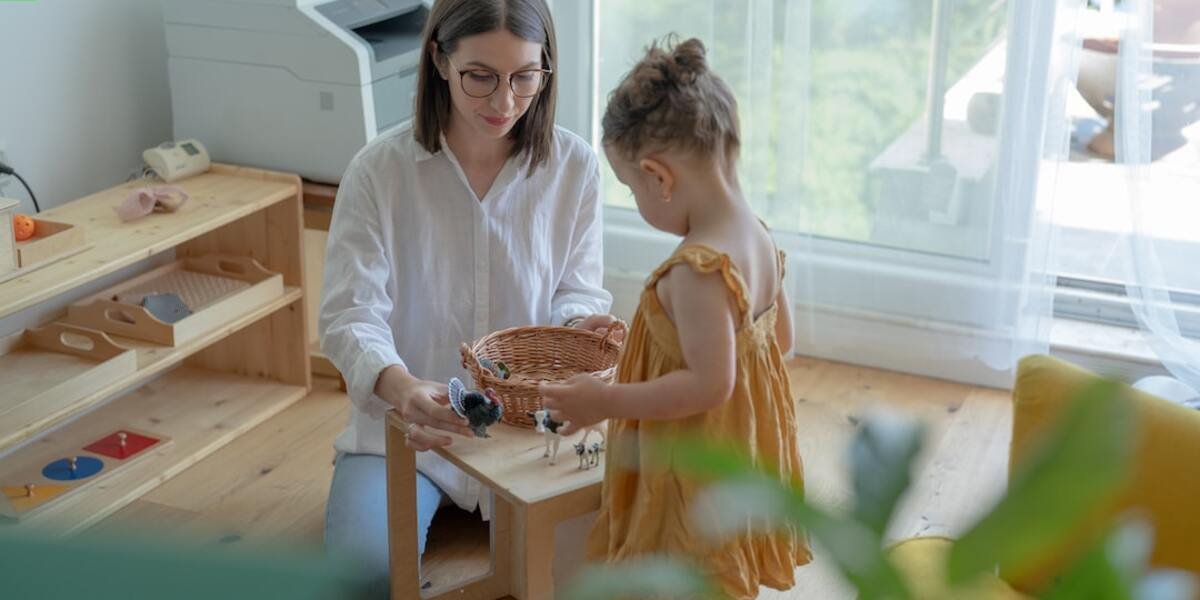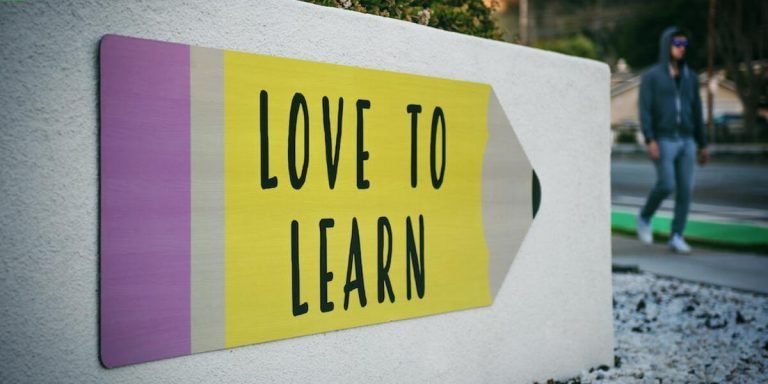Specific Learning Disability: Understanding and Navigating Challenges in Education
Specific Learning Disability is a term utilized in clinical and educational contexts to refer to unique barriers many students face when learning, reading, or performing mathematics. Recognizing the signs of this disability can be challenging because it’s often mistaken for laziness or a lack of intelligence. However, understanding that children with specific learning disabilities simply absorb information differently allows educators and parents better equip these youngsters for academic success.
The pathway towards helping your child conquer their educational journey isn’t as convoluted as you may think once armed with adequate resources and support. This blog post aims at easing out those complexities by offering valuable insights on special education resources catered specifically for learners dealing with specific learning disabilities; navigating through various challenges they might encounter along the way.
Did you know?
Despite popular misconception, a study by the National Center for Learning Disabilities reveals that children with specific learning disabilities are just as intelligent as their peers. Nevertheless, they struggle to glean academic content due to disruptions in processing information.
Understanding Specific Learning Disabilities: Definitions and Impact
Specific Learning Disabilities, often abbreviated as SLDs, pose a significant challenge in the realm of childhood education. These disabilities are not reflective upon an individual’s intelligence or potential but rather encompass various disorders that interfere with specific areas of learning and information processing. The impact these have on a child’s educational journey is profound when left unchecked, potentially leading to academic difficulties and reduced self-esteem.
The advent of technology integration in education has revolutionized how educators approach teaching strategies for children with SLDs. With its ability to adapt to individual student needs easily, technology offers learners personalized resources they need at their own pace – thus lifting barriers traditionally held by one-size-fits-all methods.
Special Education Resources and Support systems play crucial roles within this sphere as well – catering directly towards enriching the lives of those struggling with Specific Learning Disabilities while ensuring inclusivity in classrooms every step along the way.
Identifying Signs of Various Learning Disabilities
In our endeavor to appreciate the full spectrum of a child’s learning abilities, an understanding and identification of specific learning disabilities (SLD) becomes pivotal. Recognizing signs early on can offer children with SLDs maximum opportunities for success in school and beyond.
Among these conditions are dyslexia impacting reading functionality; Dyscalculia causing difficulty in understanding numbers; Dysgraphia leading to problems with writing; Auditory Processing Disorder which affects ability to interpret sound correctly amongst many others.
Children struggling with any form of SLD might often find themselves overwhelmed by typical classroom scenarios: chaotic noise levels during mixed activities cause discomfort due to their heightened sensitivity towards sounds. They could be facing issues following instructions as they aren’t able process information fast enough due persistent distractions around them.
With 2023 bringing forward even more advanced technological innovations aimed at integrating into educational programs – overcoming such challenges has become easier than before. Assistive technology tools like text-to-speech software help those grappling with reading difficulties while speech recognition applications assist students who struggle putting thoughts down on paper navigate through assignments effectively.
The Emotional and Social Effects on Students With Specific Learning Disabilities
Research indicates that students with a specific learning disability often grapple not just with academic challenges, but also emotional and social ones. Understanding these effects is critical for parents and educators to provide effective support.
One common struggle observed among students facing such disabilities is decreased self-esteem. This can stem from their ongoing battle against difficulties in acquiring new skills or knowledge compared to peers without similar conditions. It’s crucial to appreciate the resilience of these learners, recognizing each small victory they accomplish acadically can bolster their confidence significantly.
In addition, feelings of anxiety are commonplace among these students as well. The constant stress due to fear of underachievement might escalate into more serious mental health issues if unnoticed or unaddressed promptly.
Educational Strategies for Supporting Specific Learning Disability Needs
The advent of technology integration in educational spheres has emerged as a boon for children with specific learning disabilities. New-age tools and digital platforms simplify the process, making education more accessible, inclusive and engaging. As we deepen our understanding of various types of learning disabilities that young students may encounter, it is important to implement customized strategies that cater particularly to their unique needs.
Incorporating adaptive software programs stands among these key educational strategies employed by modern teachers today. These applications are designed keeping the diverse learners’ community in mind, especially those who face obstacles related to reading or numbers comprehension due to dyslexia or dyscalculia respectively.
Immersive technologies such as Augmented Reality (AR), Virtual Reality (VR) have also paved an exciting way towards experiential learning experiences tailored for special-needs children. By visualizing abstract concepts through 3D models and interactive exercises—and thus bridging theoretical instruction with practical knowledge—it motivates them not only intellectually but emotionally too.
Moreover on this journey dedicated towards supporting specific learning disability needs; individualized online tutoring assistance plays an impactful role. The flexibility offered allows educators to deliver one-on-one sessions addressing each child’s distinct academic challenges while fostering confidence within them at their own pace—an endeavor which can sometimes be difficult in traditional classrooms settings where catering equally every student might pose a challenge due very diversified intellectual capacities present.
Inclusive Classroom Techniques that Enhance Learning
To support students with specific learning disabilities, modern classrooms need to employ comprehensive and inclusive techniques. Whole-hearted integration of technology in education has made this goal achievable.
Digital resources like virtual manipulatives can vastly improve the learning experience for such children. Virtual manipulatives are digital objects representing concrete physical ones which aid comprehension – particularly helpful for those grappling with math or science concepts. They permit a hands-on approach without tangible materials, making them ideal amidst current social distancing norms.
Interactive whiteboards provide an equally novel solution in 2023’s tech-driven educational landscape. This interactive interface allows students to touch and manipulate items onscreen directly, catering specifically to tactile learners within our ranks who may struggle otherwise with traditional chalk-and-talk methods.
The power of adaptive software should not be underestimated either when discussing special education resources and support. Tailored curriculum content uses algorithms assessing student performance iteratively; it then adjusts subsequent instructions based upon prior performances – essentially providing personalized teaching within classroom settings! It focuses precisely where each child needs assistance rather than blindly following set-patterns common during one-size-fits-all classes practiced elsewhere.
Document cameras offer another crucial tool extending critical help towards visual learners among us dealing with a specific leaning disability (SLD). Teachers use these tools frequently for capturing real-time videos or images from books/documents onto screens visible by everyone simultaneously- thus ensuring no kid feels left out because they couldn’t view what was happening upfront!
Last but certainly not least comes assistive technology:
Assistive Technologies to Empower Students with Learning Challenges
Assistive Technologies work as catalysts, empowering these individuals by personalizing their educational experience while catering most specifically to their unique needs.
1) “Speech Recognition Software”: Students facing challenges in written expression can leverage speech recognition systems. This software transcribes spoken content into text format, enabling real-time note-taking without the need of manual typing or writing.
2) “Read Aloud Tools”: For those struggling with dyslexia, read aloud tools play an integral role. Using auditory processing methods instead of visual comprehension reduces stress on the eye-brain coordination required during traditional reading approaches.
3) “Interactive Learning Platforms”: Engaging interactive platforms help break down complex concepts into digestible chunks using audio-visual aids—enhancing understanding and retention amongst children wrestling through intellectual development disorder.
4) “Adaptive Learning Systems” : They self-adjust according to each learner’s performance level and pace – offering personalized recommendations based on individual strengths and weakness patterns identified over time.
Navigating the Legal Landscape of Special Education
Understanding and navigating the legal landscape of special education can be an overwhelming task for parents, especially those whose children have a Specific Learning Disability (SLD). With terms like IEPs (Individualized Education Programs), 504 plans, FAPE (Free Appropriate Public Education), to name just a few, it takes significant effort to absorb all this information. However, embracing technology has simplified this process by availing resources that create awareness about these procedures.
With the eruption of digital tools in today’s world, notably since our current year is 2023; technology integration now plays an essential role in addressing SLD within educational spaces. Applications designed to provide specific instructions are now readily available – catering specifically towards learners with varying needs such as dyslexia or ADHD among others. Furthermore, artificial intelligence platforms help bridge communication gaps between teachers and students who might struggle with traditional teaching methods.
Additionally heartening is how online forums have proven invaluable for connecting people involved in Special Education globally. From networking opportunities amongst educators sharing efficient pedagogical strategies – unique academic advice created from real-life experiences becomes richly accessible via these cyber communities . In conclusion though challenges exist undeniably while traversing through the realm of special education law– there exists solace knowing digital solutions support on every step guiding us successfully past each hurdle.
Key Legislation Governing Support for Students with Disabilities
In navigating the legal landscape of special education, it’s essential to understand key legislation governing support for students with disabilities. Knowledge in this area enables parents and educators alike to provide effective direction and resources targeted towards learners with a specific learning disability.
The Individuals with Disabilities Education Act (IDEA) is perhaps the most crucial piece of legislation covering special education needs in America today. Established in 1975, IDEA assures that children suffering from varied forms of disabilities receive appropriate public schooling corresponding to their unique requirements. It makes “Free Appropriate Public Education” accessible for every child, irrespective of any disabling condition.
Further fine-tuning our focus onto students facing a specific learning disability like dyslexia or Autism, Section 504 under the Rehabilitation Act comes into play. This portion reserves rights for individuals bearing impairments interfering regular life activities including walking, seeing or hearing – and also covers ‘learning’. Students fitting these criteria are likely entitled additional school accommodations such as extended test-taking times or adjusted classroom seating arrangements bolstering their academic prosperity.
Advocacy Tips for Securing Appropriate Educational Resources
Understanding how to navigate through the legal landscape of special education can be daunting, particularly for parents or guardians dealing with a child’s newly diagnosed specific learning disability. Here are some advocacy tips that will help you secure appropriate educational resources and support.
Start by understanding your rights as well as those of your child. As stipulated in the Individuals with Disabilities Education Act (IDEA), every student is entitled to a Free Appropriate Public Education (FAPE) which must be tailored according to each unique necessity in their Individualized Educational Program (IEP). Knowledge about these standards is crucial when advocating on your ward’s behalf.
Foster open communication lines with educators and institution leaders. Keeping an honest discourse means being updated regarding classroom activities, teaching practices used, progress assessment methods employed alongside any recommended adjustments needed per observations made during educative instances.
Further leverage technology integration into this process strengthens resource efficiency and optimizes learning outcomes for children suffering from specific learning disabilities. Technology potentially bridges gaps existing within standard pedagogical techniques enabling quality education inclusive towards all students alike irrespective of their individual challenges faced daily during school hours.
Conclusion
In wrapping up, it’s clear that understanding and navigating the challenges of a specific learning disability may feel like trying to solve an intricate puzzle. But remember this – every child is unique in their style of learning and absorbing knowledge. Having a ‘specific learning disability’ doesn’t mean they are less capable; it simply means we need to discover alternate ways to bring out their potential.
Don’t stop at just this post! Feel free to browse around our website for more valuable insights on childhood education. We have plethora of resources dedicated to assisting parents and educators alike in shaping bright futures for children regardless what comes along with them initially.
Because no challenge should ever overshadow brilliance!







